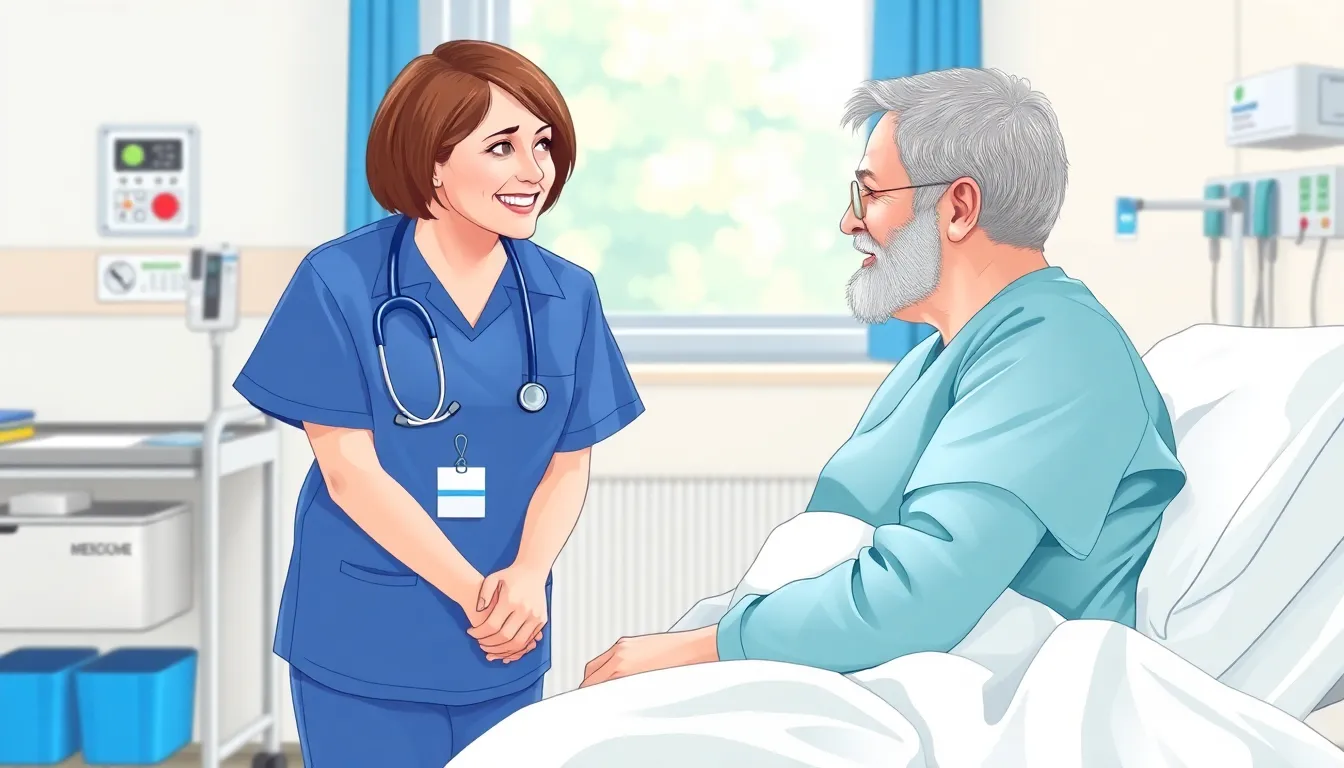The Best Fluffy Pancakes recipe you will fall in love with. Full of tips and tricks to help you make the best pancakes.

Communication Skills in Nursing: Unlocking Better Patient Care and Outcomes
In the fast-paced world of nursing, communication skills aren’t just a nice-to-have—they’re a lifeline. Imagine a nurse trying to decipher a patient’s mumbling about their symptoms while juggling a dozen charts and an overflowing coffee cup. It’s a recipe for disaster! Effective communication can mean the difference between a smooth recovery and a chaotic shift filled with misunderstandings.
Communication Skills in Nursing
Effective communication skills in nursing play a vital role in patient care and safety. They help nurses interact efficiently with patients, families, and colleagues.
Importance of Effective Communication
Effective communication forms the foundation of high-quality patient care. It enhances understanding between nurses and patients, leading to improved health outcomes. Clear communication minimizes the risk of misunderstandings, which can jeopardize patient safety. Nurses that communicate well can better assess patients’ needs, ensuring rapid and accurate responses. Strong communication fosters trust, making patients feel more comfortable sharing their concerns. Ultimately, enhanced communication skills elevate the overall efficiency and satisfaction of the nursing process.
Types of Communication in Nursing
Nurses utilize several types of communication, including verbal, non-verbal, and written forms. Verbal communication includes conversations with patients and healthcare team members. Non-verbal communication, such as body language and facial expressions, often conveys emotions and attitudes. Nurses rely on written communication for charting, care plans, and discharge instructions. Effective use of each type ensures clarity, promotes teamwork, and assists in comprehensive patient care. Each communication method must be adapted to meet varying patient needs and contexts to foster understanding and cooperation.
Barriers to Effective Communication

Communication in nursing faces numerous barriers. Addressing these challenges enhances patient care and safety.
Common Challenges Faced by Nurses
Time constraints significantly hinder effective communication. Nurses often juggle multiple responsibilities during their shifts, leaving little room for thorough discussions with patients. Language differences present another obstacle, impacting the understanding of patients’ concerns and symptoms. Cultural variances further complicate interactions, as beliefs about health may differ across populations. Emotional states also influence communication; for example, anxious patients might struggle to convey their needs.
Strategies to Overcome Barriers
Active listening fosters better patient-nurse interactions. Nurses can enhance understanding by asking clarifying questions to ensure accurate information exchange. Employing interpreters or translation services improves communication with non-English speaking patients. Training in cultural competence equips nurses to navigate diverse backgrounds and beliefs effectively. Implementing simple, clear language when discussing medical terms aids in patient comprehension. Encouraging patients to express concerns and questions promotes an open dialogue, establishing trust and collaboration.
Techniques to Enhance Communication Skills
Effective communication in nursing involves several techniques that enhance interactions between nurses and patients. Two pivotal methods include active listening and non-verbal communication.
Active Listening
Active listening fosters understanding and rapport. Nurses focus completely on what the patient is saying without interrupting. Clarifying questions maintain engagement, ensuring accurate comprehension of patients’ concerns. Acknowledging feelings through verbal affirmations demonstrates empathy, which builds trust. Restating critical information allows for confirmation of understanding, reducing potential miscommunication. Engaging in this manner shows respect for the patient’s experience, ultimately promoting more effective care.
Non-Verbal Communication
Non-verbal communication plays a crucial role in conveying empathy and understanding. Body language, including gestures and facial expressions, complements spoken words. Maintaining eye contact communicates attentiveness and respect, while an open posture signals readiness to listen. Tone of voice also affects how messages are interpreted, adding emotional depth to interactions. Being mindful of personal space respects patient comfort, especially in sensitive situations. Utilization of these non-verbal cues helps nurses better connect with patients, enhancing the overall patient experience.
The Role of Communication in Patient Care
Effective communication serves as a cornerstone of patient care in nursing. It fosters trust, enhances understanding, and ensures that patients receive the attention they need.
Building Patient Trust
Building trust requires clear communication and genuine engagement. Patients feel more at ease when they perceive nurses as approachable and empathetic. Establishing rapport is vital, as it encourages patients to share their concerns openly. Nurses can use active listening techniques, like repeating or paraphrasing patients’ words, to show they value their input. Trust grows with transparency; when patients understand their treatment plans and feel informed, they develop confidence in their care. Consistency in communication also plays a key role; frequent updates reassure patients that their well-being is a priority.
Improving Patient Outcomes
Improving patient outcomes is directly related to effective communication strategies. Enhanced communication leads to better information exchange about symptoms and treatments. Patients who receive clear instructions are more likely to comply with their care plans. Regular assessments and discussions about progress can positively influence recovery times. Collaborating with interdisciplinary teams further boosts care quality, as various healthcare professionals share critical insights. Evidence shows that high-quality communication correlates with fewer medical errors, resulting in improved patient safety. Ultimately, a strong focus on communication creates a supportive environment that fosters better health outcomes.
Conclusion
Mastering communication skills is vital for nurses aiming to provide exceptional patient care. By effectively engaging with patients and colleagues, nurses can foster trust and understanding that significantly enhances health outcomes. Overcoming barriers to communication requires dedication and the implementation of strategies that prioritize active listening and empathy.
As the healthcare landscape evolves, the ability to adapt communication methods to diverse patient needs becomes increasingly important. Investing in communication training not only improves individual nursing practice but also contributes to a collaborative environment that ultimately benefits patient safety and recovery. Strong communication skills are not just an asset; they are a cornerstone of effective nursing practice.
